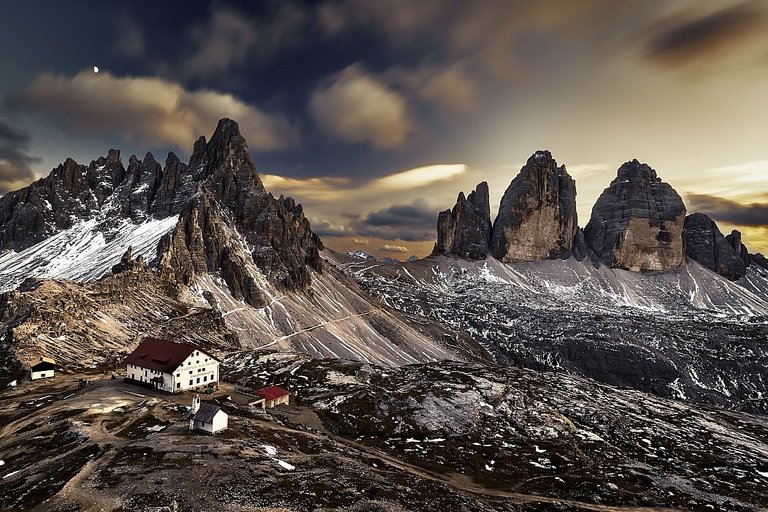The three-cabin hut (Italian Rifugio Antonio Locatelli - S. Innerkofler) is a refuge of the CAI in the Sesto Dolomites (Dolomites, South Tyrol, Italy) at an altitude of 2405 m s.l.m. It is located at the foot of the Paternkofel and offers the famous view of the Drei Zinnen. The hut is located in the area of the Dolomite War (1915-1918), which is clearly visible in the environment in the form of former war shelters, platforms and tunnels. The Dreizinnenhütte is the starting point for numerous hiking, via ferrata and climbing tours in the Nature Park Drei Zinnen and a popular destination for day trippers.

The first plans for the construction of the first three-cabin hut were made in 1881 by the Hochpustertal section of the German and Austrian Alpine Club. Since the building was subsidized by the Central Committee of the Alpine Club, construction was soon started, so that in September 1882 the hut was completed. This first shelter, a small stone building with a kitchen with table and stove and sleeping accommodations on straw storage for a total of 18 people was inaugurated on 25 August 1883 due to bad weather. In 1886 and 1891 there were extensions and from 1892 the hut was also farmed. From the year 1897 an annual number of visitors of 642 is already known. In 1898 the alpinist and mountain guide Sepp Innerkofler took over the management of the hut. In 1907, the three-in-cabin was extended by one floor, 1908, the now 55 mountain climbers place bidding shelter was reopened. This year already visited 2000 people the hut.
In the mountain war, the hut was destroyed in 1915 by Italian grenades. From 1920 to 1922 a nearby military hut was used as a hut and in 1922 a new hut was built by the Alpine Club South Tyrol. In 1923, this cottage was expropriated by the Italian state, handed over to the Club Alpino Italiano (CAI), Padua section, and renamed Capanna Antonio Bettella. In 1935, the same section, in collaboration with the Bolzano section, built the present larger three-room hut on the ruins of the old one. During the Second World War, the hut was empty from 1942 to 1945, was looted and used as a sheep pen. In 1946, the section Padua renovated the house, after she had also acquired the share of the Bolzano section, and since then manages the hut. Today, the hut is visited daily by up to 2000 guests, mostly day visitors who hike from the Auronzo Hut here.